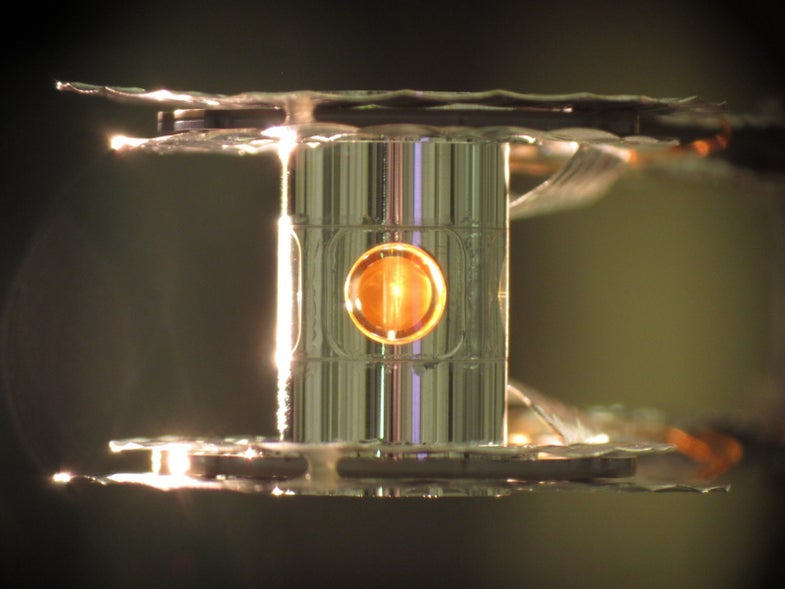National Ignition Facility Announces Record Amount Of Fusion Energy
Physicists had to compress the fuel to twice the density of the core of the sun.

U.S. physicists are reporting they’ve created more energy than ever before from a laser-triggered fusion reaction.
Fusion is the reaction that occurs in the interiors of stars, including Earth’s own sun. Theoretically, fusion could be a source of abundant, cheap, green energy. Yet in more than 50 years of research, scientists have been unable to get more energy out of fusion than they put in.
That’s still an elusive goal. The recent experiments, done at the U.S. National Ignition Facility, created something on the order of one percent of the energy physicists put into them. Nevertheless, this latest effort solves some important science problems, scientists outside of the facility say. Plus, the facility generated more energy than physicists put into the fuel (but not the overall system). No one has done that before. “The fusion reactions are actually putting energy back into the gas,” physicist Steven Rose tells Popular Science. Rose studies plasma physics at the Imperial College London and isn’t involved in the NIF effort.
News of this achievement first went public last October. Now, National Ignition Facility physicists are reporting their results formally. They’ve published papers in the peer-reviewed journals Physical Review Letters and Nature.
It’s hard to know how close these results bring us to viable fusion power. There is one other major line of research into fusion, called magnetic confinement. Magnetic confinement uses a different method for triggering fusion than the National Ignition Facility, which uses a method called inertial confinement. How do the new NIF results compare to those from magnetic confinement? It’s hard to say because the two technologies are so different, Rose says.

Inside the NIF Target Chamber
Nevertheless, Rose calls the NIF results “a very significant achievement.” For one thing, the NIF scientists saw evidence that a process called bootstrapping occurred during their trial runs. During bootstrapping, the fusion reaction creates alpha particles that drive up the temperature of the reaction, which creates more alpha particles, and so on. Scientists consider bootstrapping necessary for NIF to get more energy out of fusion than it puts in through its lasers.
As for the reaction itself, it’s a story of making a lot happen in a small, intricate, layered space.
The National Ignition Facility, located in northern California, has a composite laser made of 192 lasers. NIF scientists aim the laser at a cylindrical container called a hohlraum that’s just a few millimeters in length. Inside the hohlraum is a spherical capsule. And coated on the inside of the capsule is a microns-thick ice layer of deuterium and tritium, which are isotopes, or alternate chemical forms, of hydrogen. Deuterium and tritium are the fuels of fusion.
When the NIF laser fires, it compresses the spherical capsule by a factor of 35. That drives the deuterium and tritium together to high densities to trigger fusion.
“The density of the fuel that we finally achieved in these particular experiments are three times, or two and a half to three times, the density of the center of the sun,” physicist Omar Hurricane, who worked on the fusion reaction, said in a telephone conference for reporters. “So the conditions are quite ferocious.”